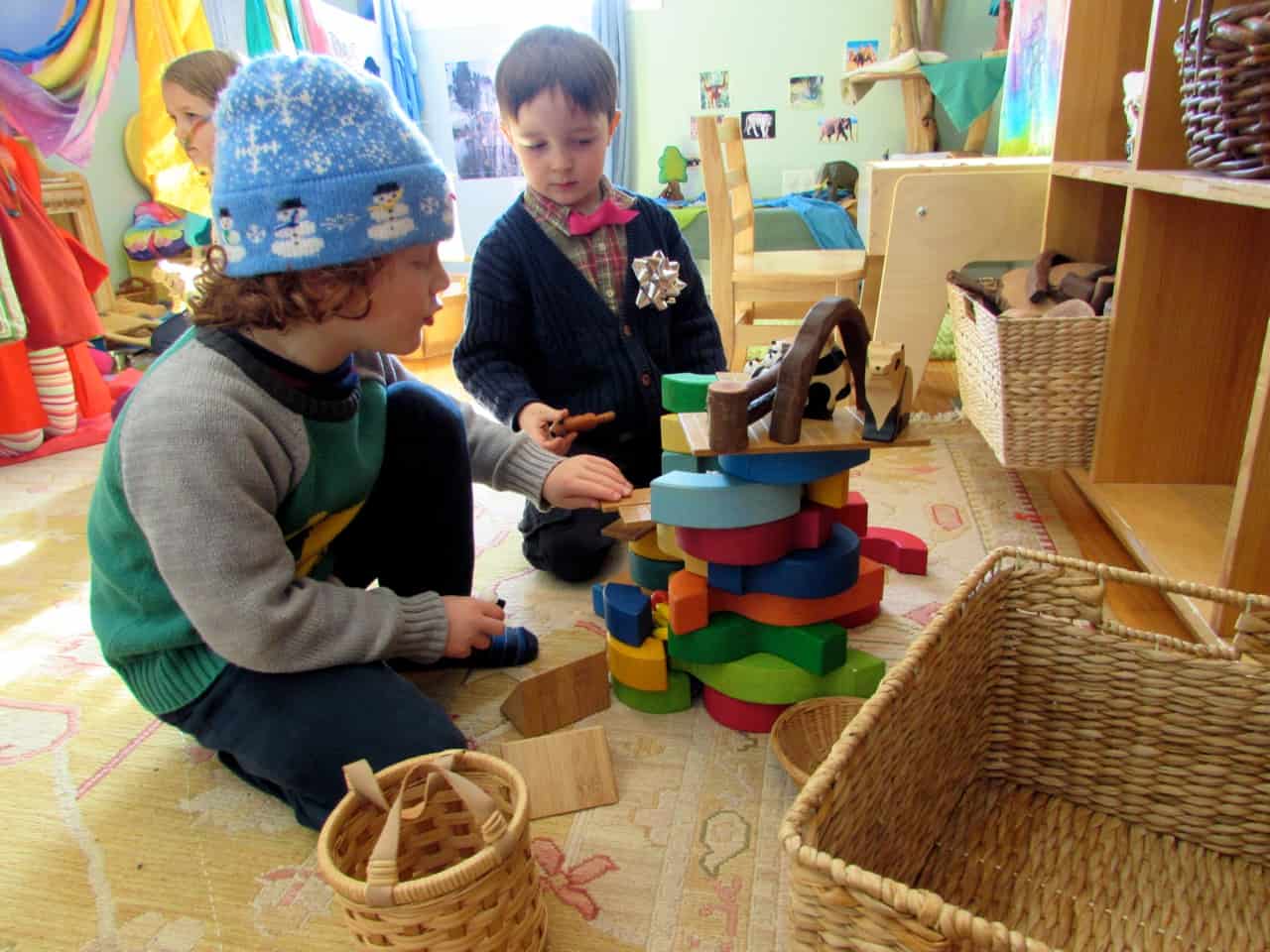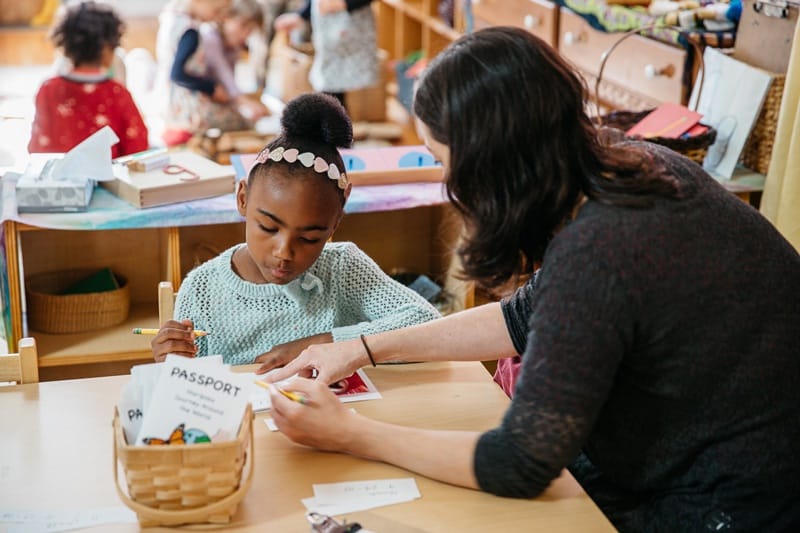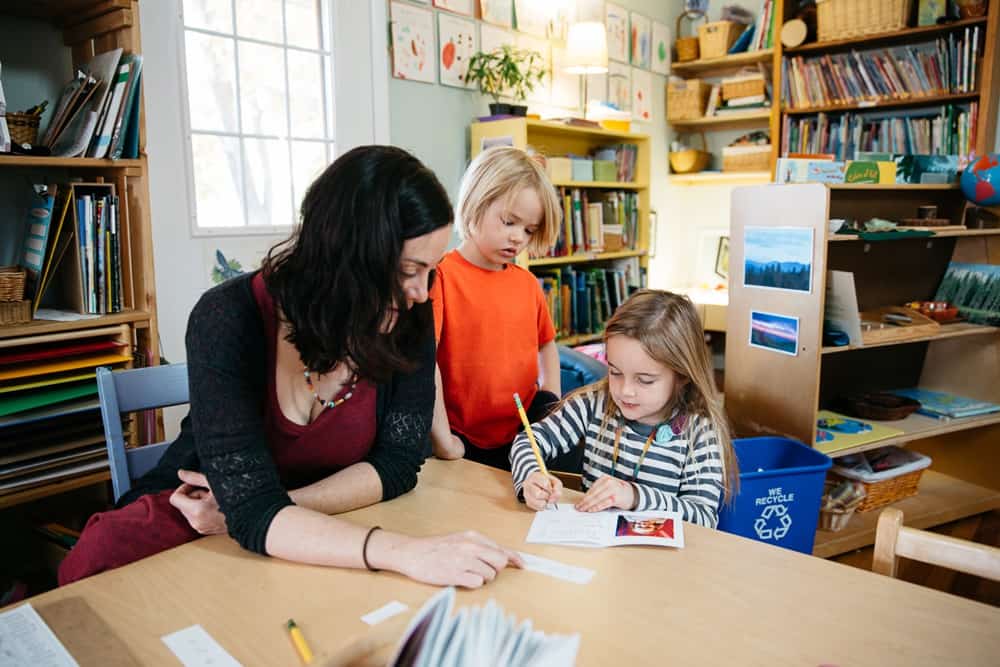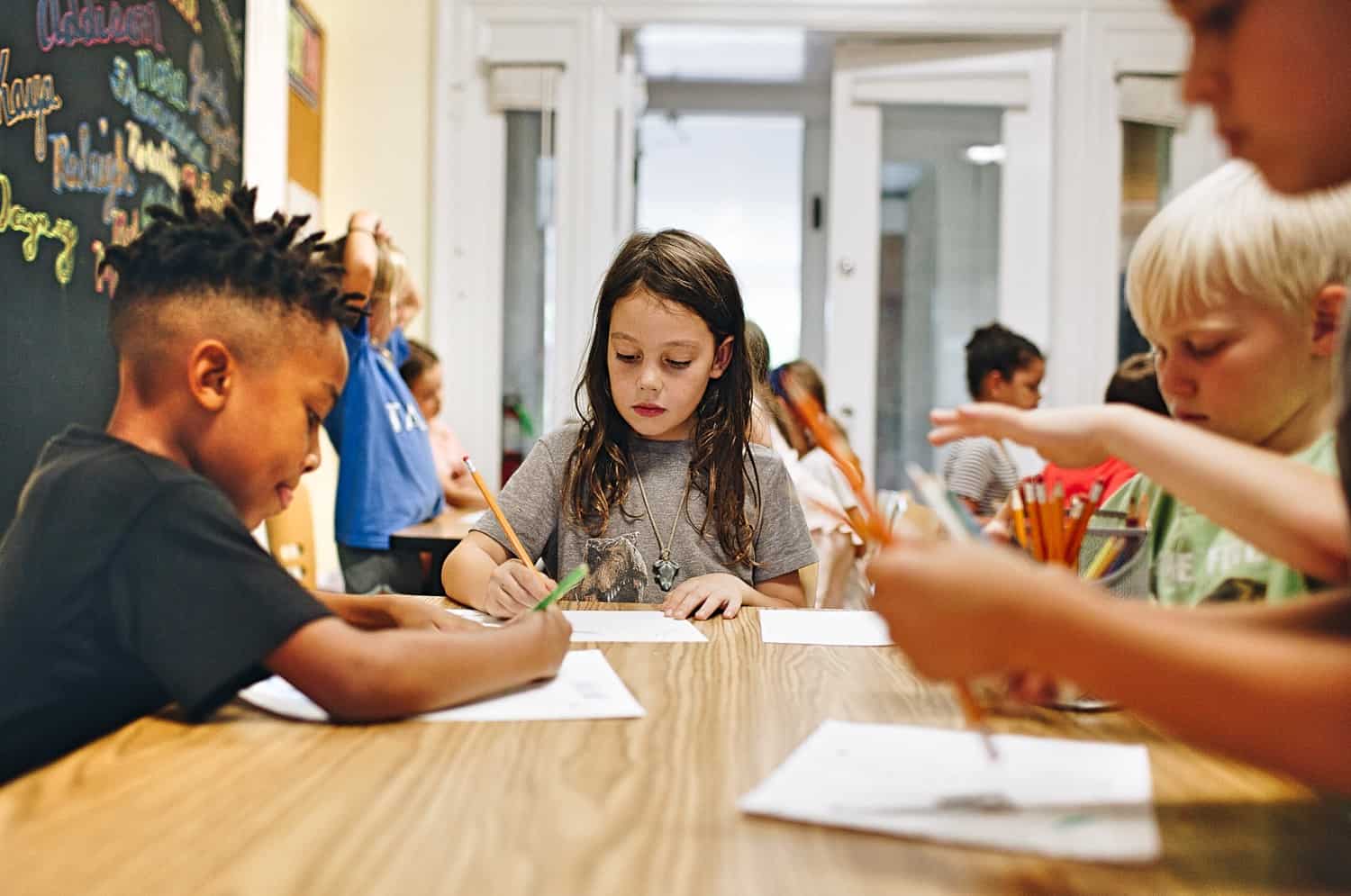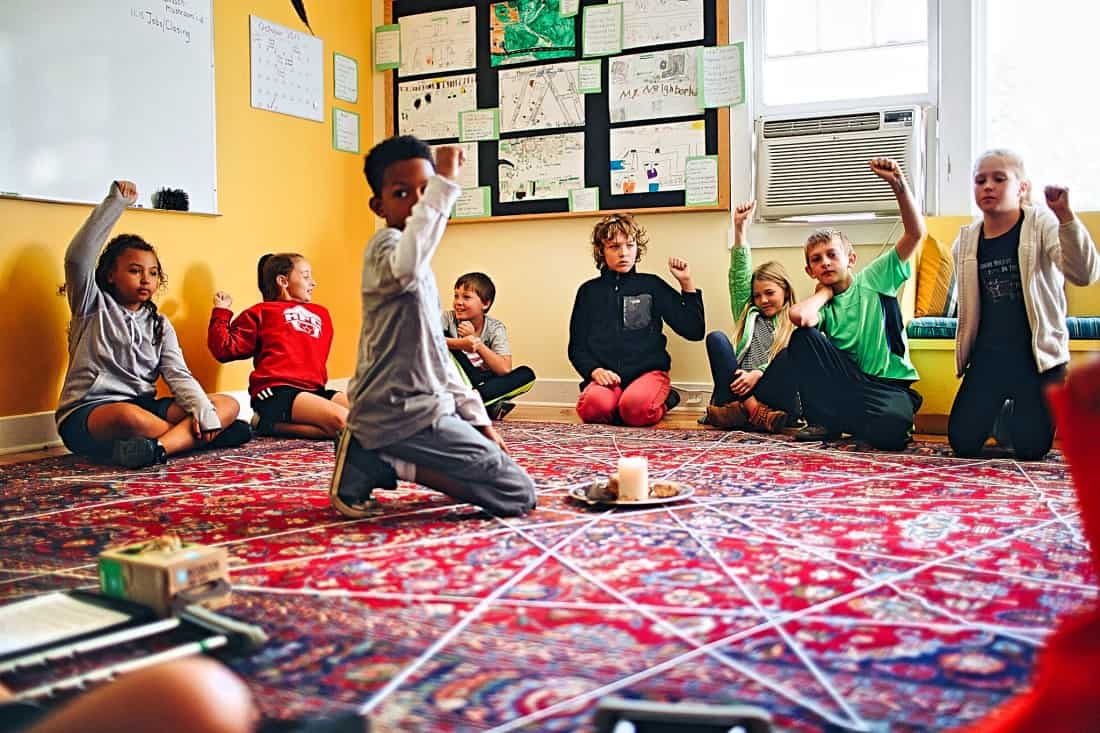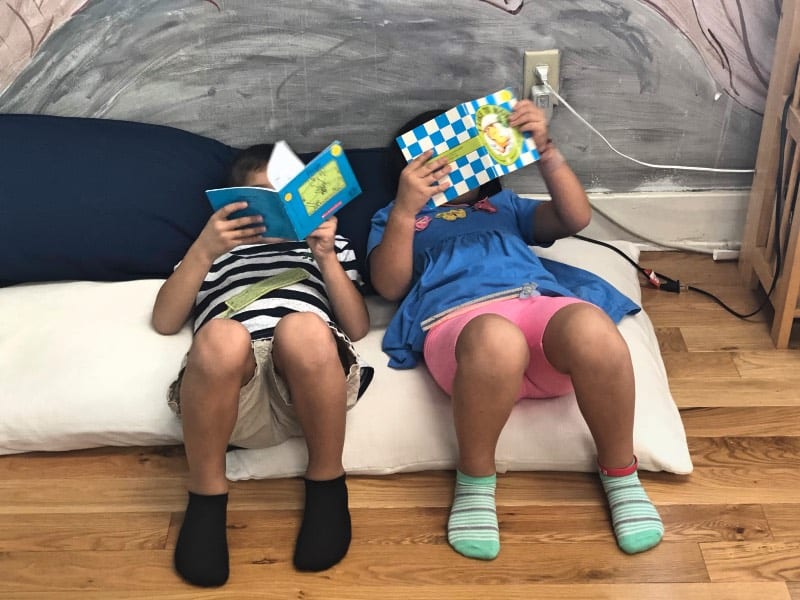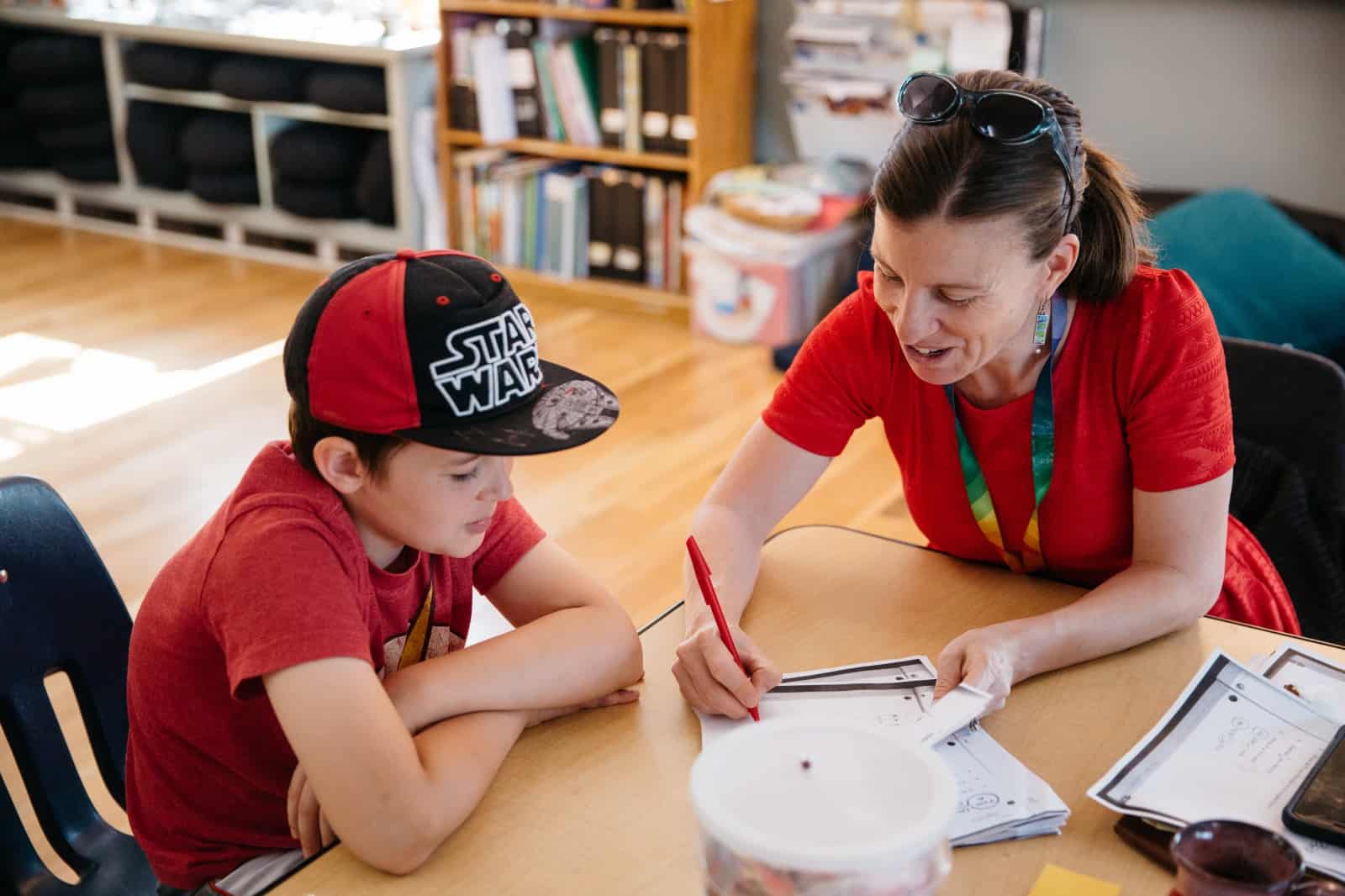A Blended Approach
Holistic education focused on the whole childThe Rainbow Learning Model has aspects of Montessori & Waldorf Approaches
Montessori Schools
It isn’t uncommon for people to assume that Rainbow Community School is a Montessori School.
After all, our preschool and kindergarten classrooms look quite similar to a Montessori classroom.
The Rainbow Learning model does have some important similar approaches and techniques, and
we have several teachers who are Montessori certified, but there are some differences as well.
Both approaches are grounded in close and insightful observations of children. Maria Montessori
was a pioneer in crafting a learning approach and environment that naturally suited children, or that was “child-centered.”
If one were to examine the Eight Principles of Montessori Education, one
would see nothing that isn’t included in Rainbow’s philosophy:
1. Movement enhances thinking and learning.
2. Learning is improved when students have choice and a sense of control.
3. Learning is improved when students are interested in what they are learning.
4. Extrinsic rewards are avoided, in favor of intrinsic motivation.
5. Learning with and from peers through collaboration.
6. Learning is more authentic when immersed in meaningful, concrete contexts.
7. A loving, authoritative teacher gives children freedom within clear boundaries and high expectations.
8. Order in the environment is beneficial to children.
These principles were radical when Maria Montessori developed them 100 years ago. She was
joined by Piaget, John Dewey, and a others who believed in a “constructivist” approach, whereby
children learn by doing, or by “constructing” their own learning.
The Rainbow Learning Model
When the Rainbow Learning Model was developed in 1977, it had the advantage of being able to learn from the Montessori model, while adding some principles to create a unique holistic approach to education.
The most notable additions in our stated core principles are the emphasis on the natural world, creativity, and an explicit emphasis on the spiritual development of children.
Another addition to the Montessori principles is the strong inclusion of parents and family in the educational framework as key part of the learning community.
Rainbow’s Model and Montessori Differences
One of the biggest differences between Montessori education and Rainbow is how each day is structured around the different types of activities. In a classic Montessori school, young children spend the much of their day doing independent work for stretches of time. In Rainbow, children have blocks of time for independent work, but they also have more group collaboration, group projects, and direct instruction.
In preschool the whole class gathers each day for a community circle, which we call “centering.” There is a strong sense of the class being a community, and children have more than a lot of opportunity to learn how to work together and to practice sophisticated social and emotional skills that are so important in today’s world.
In the middle school grades, Rainbow has a philosophy that the techniques and curriculum need to constantly change and adapt to the current day. Maria Montessori never had the opportunity to develop an operating middle school in her lifetime, which is a shame, because her ideas were groundbreaking, and actually very different than her elementary school model. Were Maria Montessori to walk into the Rainbow Community’s Omega Middle School today, she’d likely be very pleased with its evolution.
In summary, if you feel that a Montessori School may be a good fit for your child, it would make sense to tour Rainbow Community School, as the Rainbow model has many similar features, as well as several different features as well. If you are already at a Montessori School and wondering how the transition to Rainbow would be for your child, it is worth a conversation.
Waldorf Schools
If you have taken a serious look at Rainbow Mountain Children’s School and you are familiar with schools that are inspired by Waldorf Education, you may have noticed some similarities in feel. In fact, many of our teachers, and even the Executive Director, have some Waldorf teacher training
Rainbow features that may look or feel similar to some schools inspired by Waldorf Education:
- Similarities in beliefs about child development
- Approaching the child holistically
- A nurturing classroom environment
- Emphasis on the teaching as a sacred calling
- Appreciation of story and myth
- Emphasis and love for the natural world
- Use of natural materials and aesthetically beautiful classroom environments
- Similar view of the media as needing to be tempered in the life of young people
- Art immersion
It is important to note that some schools inspired by Waldorf Education are not members of the Association of Waldorf Schools of North America (AWSNA). There are differences between schools inspired by Waldorf Education and AWSNA member schools.
The Contrasts:
The differences we see between Rainbow and other schools inspired by Waldorf Education are primarily a result of underlying philosophy.
The first Waldorf School was founded by Rudolf Steiner, a clairvoyant, philosopher and “spiritual scientist” (as he termed it) in World War I Germany. Many schools inspired by Waldorf Education turn to Steiner’s writings and transcribed lectures on education and anthroposophy (the term for his spiritual science) as the primary source.
While Rainbow loves to pull from the best practices many schools, it is not bound to the doctrine of one particular philosopher. As a result of this fundamental difference in foundational approaches, here are a few of the different specific practices at Rainbow:
- We believe that every child is different and we introduce many concepts before the curriculum that was indicated by Rudolf Steiner. For example, we believe many kindergartners are ready to learn to read, some are not. Both are accommodated at Rainbow.
- We hire teachers who are trained in both conventional education (usually with an MA in education) and trained in alternative education.
- We have students begin using technology in 4th grade.
- We believe that different teachers bring different strengths, passions, and relationships for students and therefore do not loop the same teacher with a group of students from grades 1-8, as indicated by Steiner (we occasionally have kids loop with a teacher for two years).
- We allow students to write their own fiction stories and students their own artwork out of their imagination at young ages.
A Summary
If you love some of the practices of schools inspired by Waldorf Education but you want that balanced with an academic program that progresses a little faster in the lower grades, then Rainbow may be a great fit for your family.

